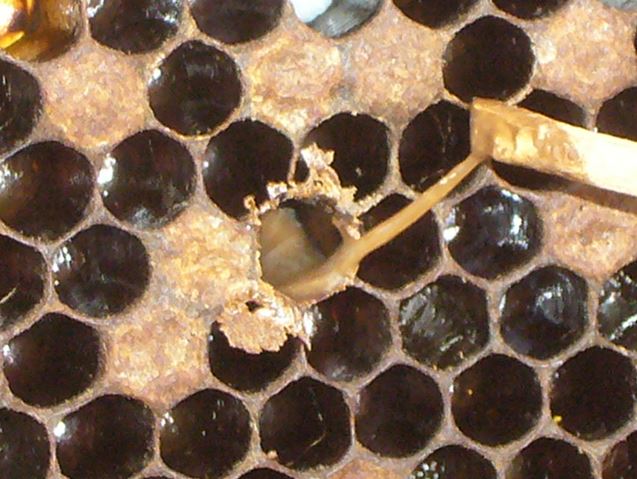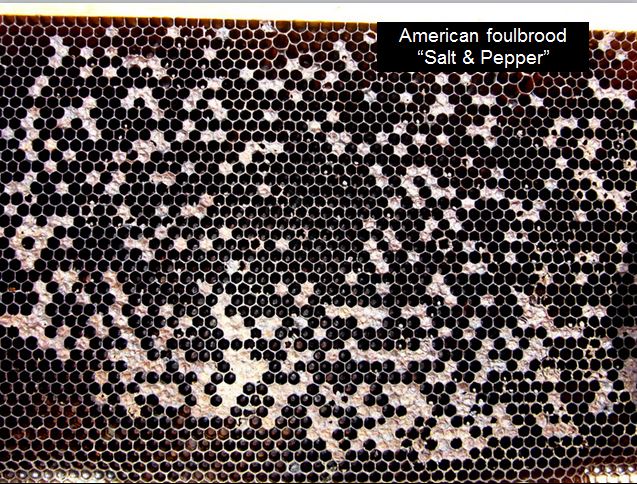Causative Agent
- Paenibacillus larvae
Highly contagious
- Spore forming bacterium
- Larva becomes dry to a hard scale that adheres tightly to the cell
- Each scale – 100 million spores
All beekeepers should be able to recognize and take action!
Symptoms
- Larvae become infected when > 2 days old
- Die typically just after cell is capped
- Brood pattern is scattered
- Cappings are sunken and punctured
Larvae “melt down”
- Larvae ‘rope’ out an inch or more
- Light brown turning to dark brown then becoming a black scale
American Foulbrood Control
Have an AFB action plan
- Take action immediately
- Burn diseased bees and equipment, contact vet for antibiotics for managing colonies in he same apiary that are not displaying the disease symptoms
Antibiotics
- Terramycin (bacterial resistance)
- Tylosin (requires a vet prescription)
- Lincomycin
- Doesn’t treat spores
Active AFB infected hives must be burned. Antibiotics do not kill the AFB spores, but are used to mitigate the spread of AFB to the rest of the hives in the apiary.
Burning
- Requires a permit
Burying in Hazmat field (not legal in CA)
Gamma radiation (not legal in CA)
Shook Swarm/shake down – shaking entire colony onto new equipment/hive – not
recommended.


